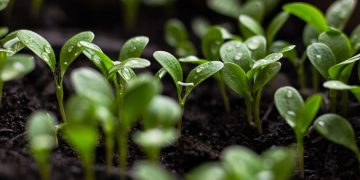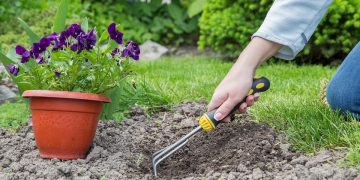Harmony in the Garden: Embracing Permaculture Principles for Sustainable Living
Permaculture is a holistic approach to sustainable living that aims to create harmonious relationships between humans, nature, and the environment. By following permaculture principles in our gardens, we can create ecosystems that are not only beautiful and productive but also resilient and self-sustaining. In this article, we will explore the key principles of permaculture and how they can be applied in the garden to promote harmony and sustainability.
What is Permaculture?
Permaculture is a design system that mimics the patterns and relationships found in natural ecosystems to create sustainable human settlements. It was developed in the 1970s by Australian ecologist Bill Mollison and designer David Holmgren, and has since spread around the world as a way to address environmental, social, and economic challenges.
Key Principles of Permaculture
There are several key principles of permaculture that guide its design and implementation. These principles include:
1. Observe and interact
By observing and interacting with the natural world, we can better understand the patterns and processes that govern ecosystems. This allows us to design our gardens in a way that works with, rather than against, nature.
2. Catch and store energy
Permaculture emphasizes the use of renewable energy sources, such as sunlight and rainwater, to power our gardens. By capturing and storing this energy, we can reduce our reliance on fossil fuels and other non-renewable resources.
3. Obtain a yield
Permaculture gardens are designed to produce a variety of yields, including food, fuel, fiber, and medicine. By diversifying our yields, we can create more resilient and self-sustaining ecosystems.
4. Apply self-regulation and accept feedback
Permaculture gardens are designed to be self-regulating, with feedback loops that help maintain balance and harmony. By observing and responding to feedback from our gardens, we can make adjustments to improve their health and productivity.
5. Use and value renewable resources and services
Permaculture emphasizes the use of renewable resources, such as compost, mulch, and green manures, to build healthy soils and support plant growth. By valuing these resources and services, we can create gardens that are more sustainable and productive.
6. Produce no waste
Permaculture gardens are designed to minimize waste by recycling and reusing materials whenever possible. By closing the loop on waste, we can create gardens that are more efficient and sustainable.
Applying Permaculture Principles in the Garden
Now that we have a better understanding of the key principles of permaculture, let’s explore how these principles can be applied in the garden to promote harmony and sustainability.
1. Design with nature
When designing a permaculture garden, it’s important to work with the natural features of the landscape, such as sunlight, water, and soil. By observing these natural patterns and processes, we can create gardens that are more resilient and productive.
2. Build healthy soils
Healthy soils are the foundation of a successful permaculture garden. By adding compost, mulch, and other organic matter to the soil, we can improve its structure, fertility, and water-holding capacity. This, in turn, supports plant growth and helps build a diverse and resilient ecosystem.
3. Plant diversity
Planting a diverse range of crops, trees, and native plants in the garden helps create a more resilient and productive ecosystem. By planting a variety of species, we can attract beneficial insects, birds, and other wildlife that help control pests and pollinate plants.
4. Harvest rainwater
Collecting rainwater in barrels or cisterns allows us to capture and store this valuable resource for use in the garden. By harvesting rainwater, we can reduce our reliance on municipal water sources and support plant growth during dry periods.
5. Use renewable energy sources
By harnessing renewable energy sources, such as solar panels or wind turbines, we can power our gardens in a more sustainable way. This reduces our carbon footprint and helps create a more self-sufficient and resilient garden ecosystem.
Benefits of Permaculture Gardening
There are many benefits to practicing permaculture gardening, including:
1. Environmental sustainability
Permaculture gardens are designed to minimize environmental impact by conserving resources, reducing waste, and promoting biodiversity. By following permaculture principles, we can create gardens that are healthier for the planet and future generations.
2. Food security
Permaculture gardens are productive and diverse, providing a reliable source of fresh, nutritious food year-round. By growing a variety of crops and fruits, we can reduce our dependence on grocery stores and improve our food security.
3. Economic savings
Permaculture gardens can save money on groceries, utilities, and landscaping services by producing food, energy, and resources on-site. By using renewable energy sources and recycling materials, we can reduce our monthly expenses and live more sustainably.
4. Improved health and well-being
Spending time in the garden and connecting with nature has been shown to improve mental and physical health. By practicing permaculture gardening, we can reduce stress, increase physical activity, and enjoy the benefits of fresh air and sunshine.
Conclusion
Permaculture gardening offers a holistic approach to sustainable living that promotes harmony and resilience in the garden. By following permaculture principles, we can create ecosystems that are not only beautiful and productive but also environmentally friendly and self-sustaining. Whether you are a beginner or experienced gardener, incorporating permaculture principles into your garden can help you live more sustainably and connect with the natural world in a meaningful way.





















































